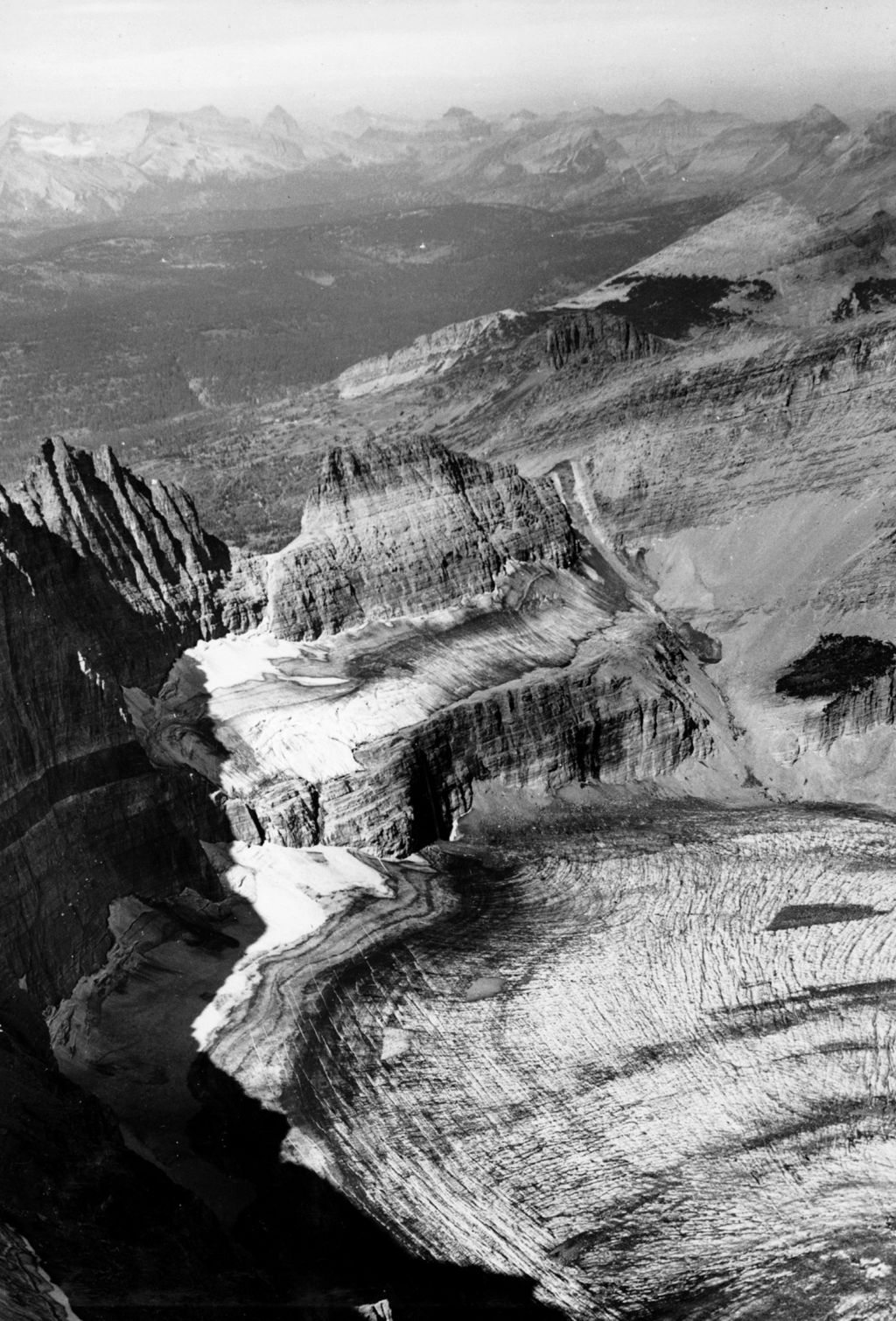Glacial ice is the largest freshwater reservoir on Earth. Glaciers are persistent bodies of ice that form where the accumulation of snow exceeds its ablation.
Glaciers account for a significant portion of the world's
cryosphere.
| ablation | The opposite of accumulation, ablation refers to processes that remove snow, ice, or water from a glacier (melting, evaporation, sublimation, calving, or wind erosion). |
| calving | Calving is the severing of chunks of ice at the terminus of a glacier. |
| cryosphere | Portions of Earth where water is in solid form (e.g., sea ice, lake ice, river ice, snow cover, glaciers, ice caps, ice sheets, and frozen ground). |
| sublimation | Sublimation is the conversion from the solid to the gaseous phase of water, without an intermediate liquid stage. |
Glaciers slowly deform and flow from the force of gravity.
The wintry clouds drop spangles on the mountains. If the thing occurred once in a century historians would chronicle and poets would sing of the event; but Nature, prodigal of beauty, rains down her hexagonal ice-stars year by year, forming layers yards in thickness. The summer sun thaws and partially consolidates the mass. Each winter's fall is covered by that of the ensuing one, and thus the snow layer of each year has to sustain an annually augmented weight. It is more and more compacted by the pressure, and ends by being converted into the ice of a true glacier, which stretches its frozen tongue far down beyond the limits of perpetual snow. The glaciers move, and through valleys they move like rivers.
— John Tyndall, 1861
Unlike seasonal snow cover, freshwater ice, or transient sea ice that lasts perhaps a few years, a water particle in a glacier can remain frozen 10-100,000 years longer.
A man who keeps company with glaciers comes to feel tolerably insignificant by and by.
— Mark Twain, 1880
99% of glacial ice resides within vast ice sheets cover the poles. Deep ice in East Antarctica might be approaching a million years in age.
The truth is, that those who have never entered upon scientific pursuits know not a tithe of the poetry by which they are surrounded.
— Herbert Spencer, 1889
REFERENCES
- A Tramp Abroad, Mark Twain, 1880.
- Education: Intellectual, Moral, and Physical, Herbert Spencer, 1889, 82-83.
- Glaciers, Wikipedia.
- The Glaciers of the Alps & Mountaineering, John Tyndall, 1861 (1911), 247.





